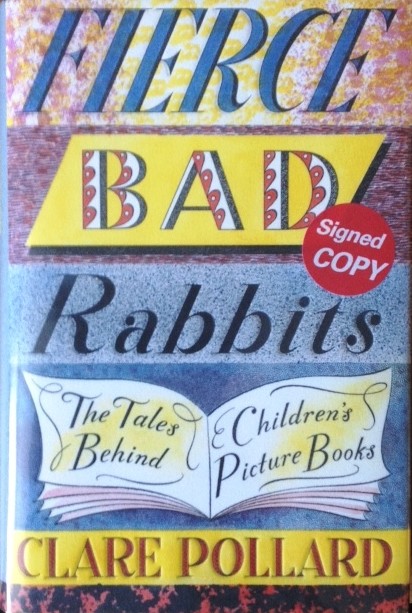Inspiring Young Readers
 posted on 10 Mar 2022
posted on 10 Mar 2022
Fierce Bad Rabbits : The tales behind children’s picture books by Clare Pollard
I’ve written elsewhere on this site about just how underrated and unguarded children’s picture books tend to be and so it’s a special delight to have a book that takes a serious, semi-academic approach to uncovering and explaining just how important they are. Clare Pollard’s piece of readable and loving research is partly about establishing just what a vital cultural influence the books, authors and illustrators have and, by introducing details her own biography, she also shows the child development gains that come from engaging with these wonderful artefacts.
Pollard takes a broadly chronological approach to the development of the picture book for children but the real fun is that it stops to focus on the writers and illustrators that she thinks are most important or most to be admired. That is, of course, a largely subjective set of decisions given the enormous volume of books that have been published over the hundred years or so since the author thinks the ‘modern’ children’s illustrated book emerged. She sees Beatrix Potter as the bridge from a past which was typified largely by a didactic and moralising tradition, to the present where the artistic, political and didactic all coexist. It was Potter, she claims that brought not just an acute artists eye to her creations but, importantly, changed the line of vision in which the action takes place from the position of the adult to that of the child. This allows the child the chance to identify with characters and to imaginatively enter the story as a participant themselves. The title of this book is itself a homage to Beatrix Potter and echoes that author's 1906 story ‘The Story of a Fierce Bad Rabbit.’
Although there’s an inevitable degree of idiosyncrasy in the authors and illustrators that get picked out for more detailed analysis, I’m pretty sure that most picture book aficionados wouldn’t argue with the majority of the choices she makes. And the stories behind the stories are not all sweetness and light – some of the best picture books are born from the most sombre experiences.
I think that there is a real danger in seeking to over-analyse and over-interpret the ‘messages’ – conscious or unconscious – that an author or illustrator loads into their book. The famous example of the great Judith Kerr and her most popular creation, The Tiger Who Came to Tea, is a case in point. Given that Kerr was famously an exile from Nazi Germany when she was a young child fleeing with her family from Hitler’s secret police, it’s tempting, as Michael Rosen has done, to suggest that the Tiger’s visit to the house where he eats and drinks everything the family has, is symbolic of the fear of the Gestapo turning up on the doorstep. Kerr dismissed this interpretation with the very matter of fact statement that ‘sometimes a tiger is just a tiger’.
I’m personally never sure how much there is to gain by trying to draw direct parallels between an artist’s life story and their artistic creations – one must inform the other but to then go on and say that that is the ‘meaning’ of a book or the ‘message’ of the book is far too mechanistic and clumsy. Thankfully, Pollard does steer clear of that trap for the most part.
Having expressed my reservations about the dangers of over-interpretation, there’s no doubt that there are some tremendous bits of research here that keep you wanting to read on. Witnessing how iconic picture book characters had their genesis and what a battle it was at times for the author or illustrator to get their ideas out to the waiting public is a rare treat.
At the end of the story (Pollard takes us through to Julia Donaldson’s collaboration with Axel Scheffler) there can be little doubt that, far from being ephemeral children’s illustrated books play a huge role in the creation of our culture and the sophistication of the artwork can, at its best, stand tall alongside the more traditional giants of the fine art world.
This is a must for any lover of the genre and is now available in paperback as well as hardback and can be purchased for well under £10 in either format.
Terry Potter
March 2022